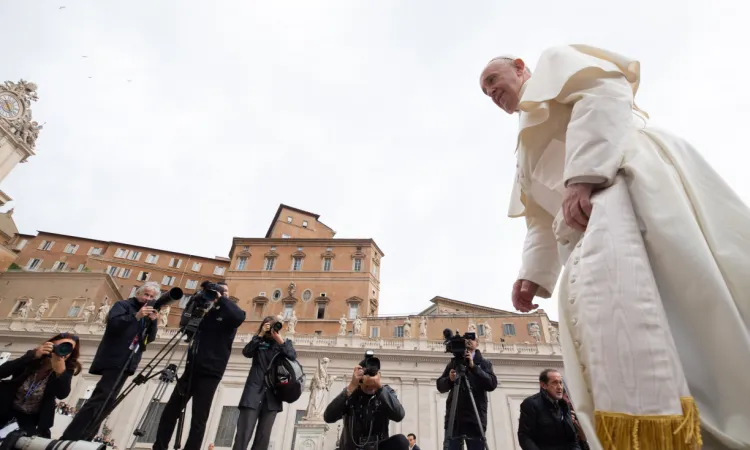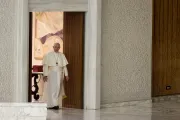For Italy, it is noteworthy that in 2020 Cardinals Angelo Bagnasco and Crescenzio Sepe will end their mandates as archbishop of Genoa and Naples, respectively. Pope Francis renewed their mandate for two years, which will end during 2020. Both Bagnasco and Sepe turned 75 two years ago.
Who will replace them? Rumors speak about a Papal preference for two Jesuits: Fr. Giacomo Costa could become the archbishop of Genoa and Fr. Antonio Spadaro, the archbishop of Naples.
Fr. Costa is the editor of Aggiornamenti Sociali, a lively magazine of the Italian Jesuits on the social teaching of the Church. Fr. Costa gained visibility as special secretary to the Synod of Bishops, first during the assembly on young people, and as then as secretary to the commission for information during the recent Pan-Amazonian synod assembly.
Fr. Spadaro is the director of La Civiltà Cattolica, and he is understood to have the pope's ear.
There are currently 20 Cardinals in charge of an archdiocese who are beyond 80. By the end of 2020, there will be 27. None of the new Cardinals who will reach the retirement age has a coadjutor with the right of succession.
The Spanish situation is the most critical one. Cardinal Ricardo Blazquez Perez, archbishop of Valladolid, is 77. Cardinal Carlos Osoro Sierra, Archbishop of Madrid, will turn 75 on May 16. Cardinal Antonio Canizares Llovera, archbishop of Valencia, will get to the retirement age on October 15. Cardinal Juan José Omella Omella, Archbishop of Barcelona, will turn 75 on 2021.
Spanish archdiocese will therefore be subjected to a significant generational change.
The other to-be-75 cardinals are mostly from Europe, but there are also two from Asia and one from Africa.
Cardinal Christoph Schoenborn, archbishop of Vienna (Austria), will turn 75 on January 22, and is in very ill health. On January 25, Cardinal Philippe Nakellantuba Ouedraogo will get to the retirement age: he is the archbishop of Ouagadougou (Burkina Faso).
Cardinal Vincent Gerard Nichols, archbishop of Westminster (England), will be 75 on November 8, while Cardinal Vinko Puljic, archbishop of Sarajevo, will do on September 8.
In Asia: Cardinal Joseph Coutts, archbishop of Karachi, will reach the retirement age on July 21;. Cardinal George Alencherry will be 75 by the end of the year. However, his position is that of the major archbishop of Ernakulam – Angamaly of Siro-Malabanan, one without an age limit.
Ambassadors
There are two Papal nuncios supposed to retire in 2020: archbishop George Kocherry, apostolic nuncio to Bangladesh, and Archbishop Alain Charles Lebeaupin, apostolic nuncio to the European Union.
On January 2, archbishop Pierre Nguyen Van Tot, apostolic nuncio to Sri Lanka, resigned at the age of 70. The nunciature to Colombo is thus currently vacant, as they are those to Angola, Argentina, Burkina Faso, Belarus, Ivory Coast, Guatemala, Jordan / Iraq, Philippines, Ghana, Malaysia / East Timor, and Zimbabwe.
It is expected for 2020 a more extensive rotation of Papal ambassadors, with the inclusion of new nuncios and diplomats.
Archbishop Joseph Marino, president of the Pontifical Ecclesiastical Academy since October 11 of last year, will have the task of providing new ambassadors.
The Pontifical Ecclesiastical Academy is the Vatican school for ambassadors, and its president must choose every year a dozen priests to enroll into the Holy See diplomatic service.
Archbishop Marino is called to overcome the crisis of the Academy. Because of a lack of vocations, Bishops present fewer candidates. Many potential candidates for the diplomatic service are stuck because they can access to the academy only from the age of 33 on. This is a problem for papal diplomacy, as there are fewer apostolic nuncios.
In the end, during this year, Pope Francis might carry forward a real shakeup in the Curia, in some crucial positions in archdioceses all over the world, and in the College of Cardinals. After 2020, we may finally be able to see who all Pope Francis' men are.



